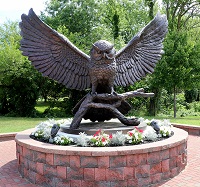Date Approved
5-27-2025
Embargo Period
5-27-2027
Document Type
Thesis
Degree Name
M.S. Civil and Environmental Engineering
Department
Civil engineering
College
Henry M. Rowan College of Engineering
Advisor
Gilson Lomboy, Ph.D.
Committee Member 1
Adriana Trias, Ph.D.
Committee Member 2
Yogiraj Sargam, Ph.D.
Keywords
Chemical Admixtures;Cold-Weather Concrete;Cost and CO2 Emission;Rheological Properties;Self-Consolidating Concrete;Setting Behavior
Disciplines
Civil and Environmental Engineering | Civil Engineering | Engineering
Abstract
Traditional cold-weather concreting methods entail significant challenges related to speed and quality of concrete placement, manpower demand, and cost, particularly in heavily reinforced structures. This study develops a highly flowable cold-weather self-consolidating concrete (CWSCC) that can withstand temperatures as low as 23°F (-5°C) without artificial heating by combining chemical admixtures including a superplasticizer, an air-entrainer, and an additive-based frost protection (ABFP) system comprising of set accelerators. Additionally, the study explores incorporating a hydration stabilizer, supplementary cementitious materials (SCMs), and viscosity modifiers. The fresh properties, rheological parameters, setting behavior, and compressive strength of the mixtures were evaluated according to standard procedures and related literature. The results show that CWSCC is suitable for cold-weather applications, maintaining workability for 15-60 minutes after mixing. Dynamic yield stress was found to inversely correlate with slump flow. The setting behavior was assessed using both standard penetration resistance test and ultrasonic pulse velocity (UPV) test. At 23°F (-5°C), CWSCC's 90-day compressive strength was 26% less than moist cured concrete at 68°F (20°C). CWSCC's material cost was 33% higher than vibrated concrete but was offset by savings in placement, consolidation, and heating. It proved to be more cost-effective and resulted in lower CO2 emissions for smaller structures, with additional potential savings in equipment mobilization and project timelines.
Recommended Citation
Morana, Aljhon Siyangbigay, "Cold-Weather Self-Consolidating Concrete" (2025). Theses and Dissertations. 3363.
https://rdw.rowan.edu/etd/3363

